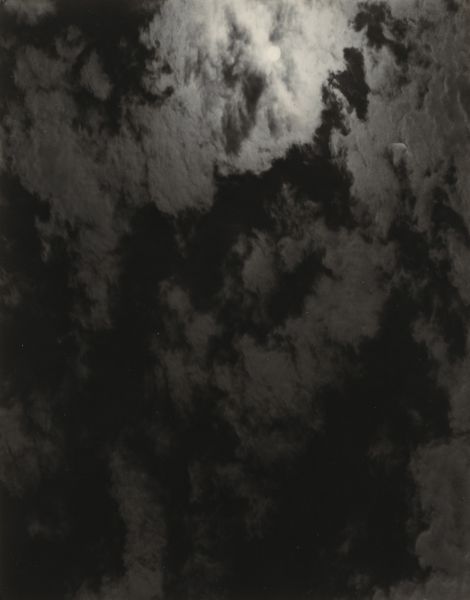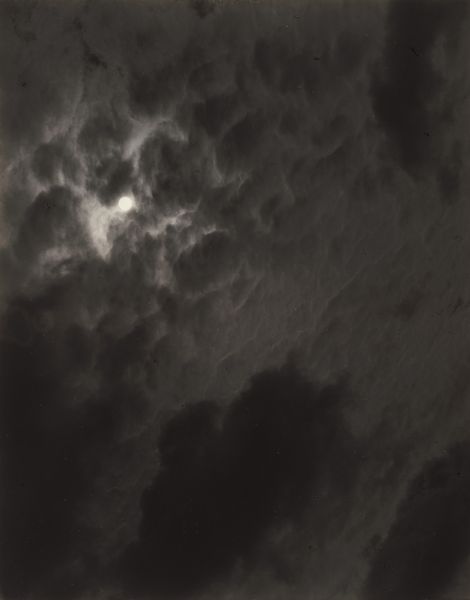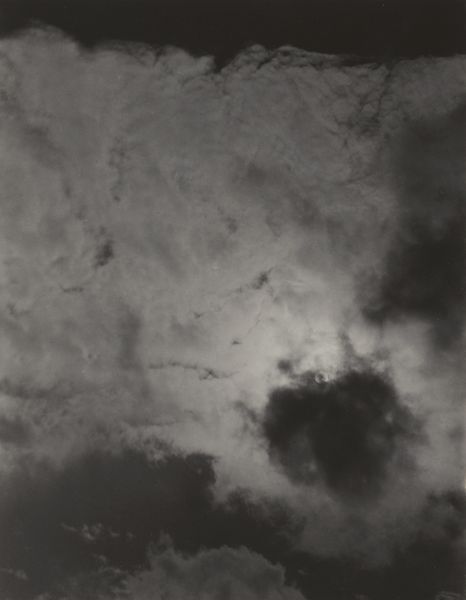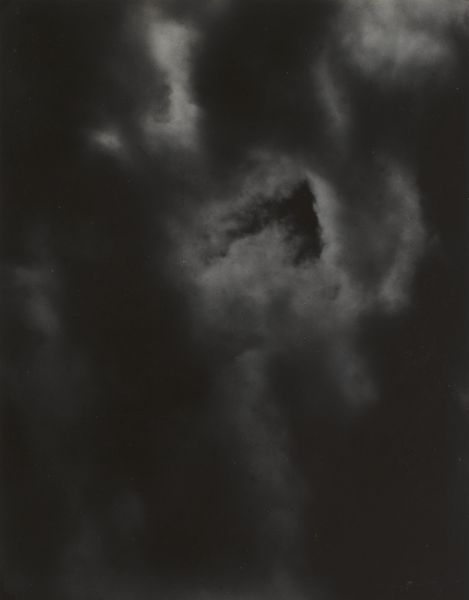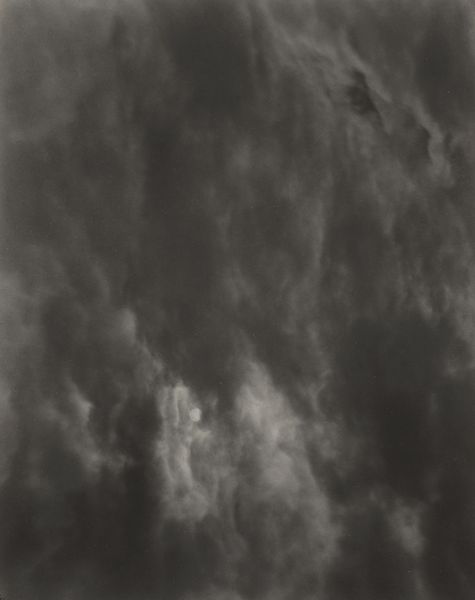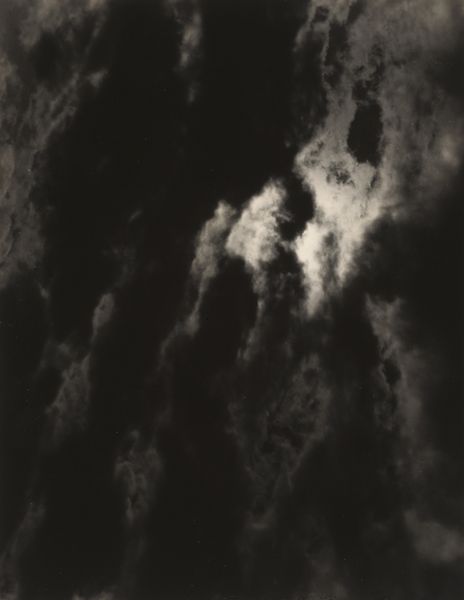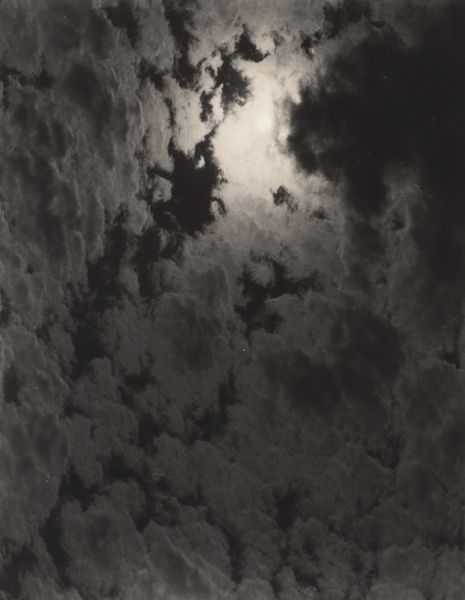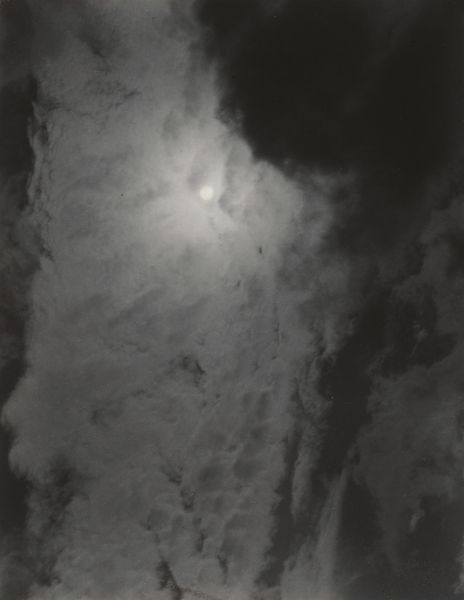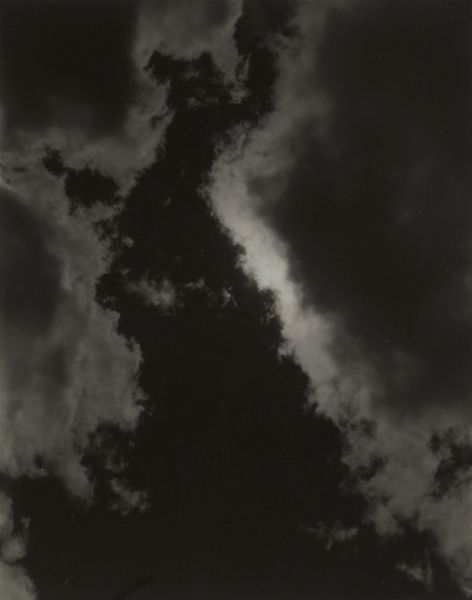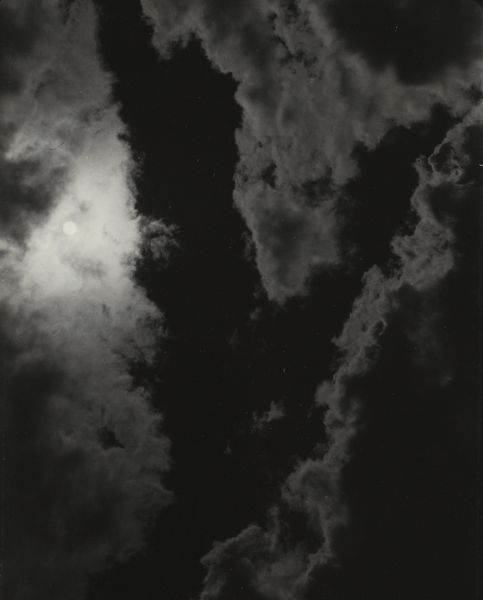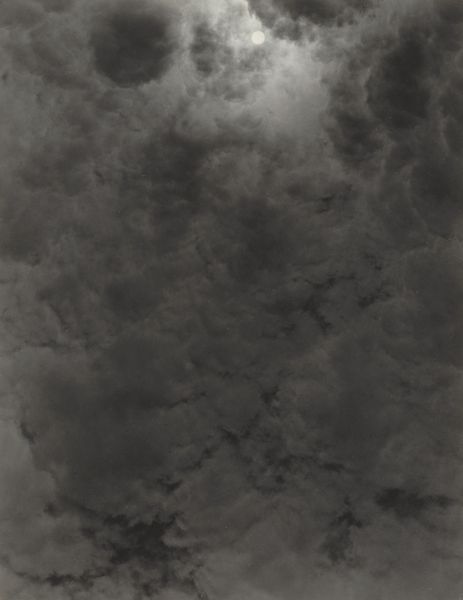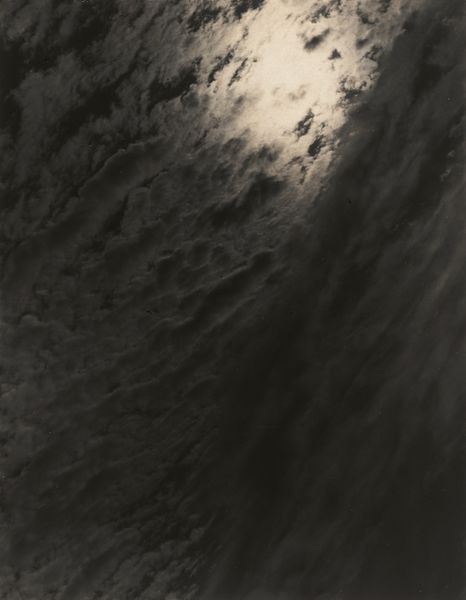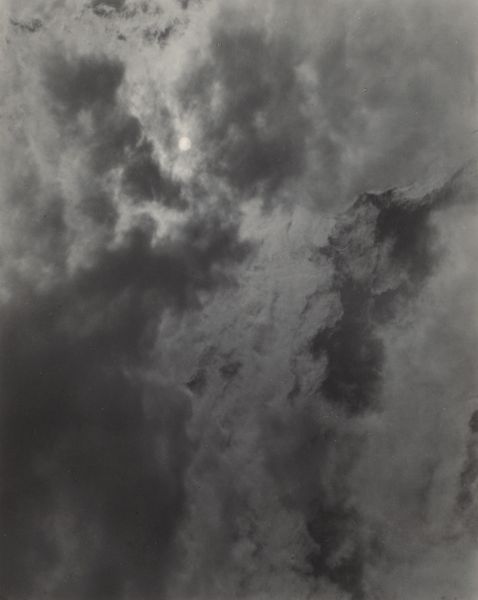
photography, gelatin-silver-print
#
pictorialism
#
landscape
#
photography
#
gelatin-silver-print
#
monochrome photography
#
abstraction
#
modernism
#
monochrome
Dimensions: sheet (trimmed to image): 11.7 x 9.1 cm (4 5/8 x 3 9/16 in.) mount: 34.3 x 17.6 cm (13 1/2 x 6 15/16 in.)
Copyright: National Gallery of Art: CC0 1.0
Curator: Alfred Stieglitz’s "Songs of the Sky D3," a gelatin silver print from 1923, offers an intimate look at his evolving approach to photography as art. The ethereal depiction of clouds really captures something profound, don't you think? Editor: Profound, yes, but also unsettling. All that sky bearing down, heavy with shadow, except for that tiny sun...it feels almost oppressive. Like something vast is watching you. Curator: And perhaps that’s the point. Stieglitz, deeply influenced by modernist ideals, sought to elevate photography, viewing it as capable of expressing inner states. By focusing on commonplace subjects, such as the sky, he imbued it with deeper symbolic resonance. His choice of gelatin silver printing is critical here; it allowed for greater tonal range and sharpness. Editor: True. It does let him wring every last drop of emotion out of these shades of gray. But those stark contrasts—the almost velvety blacks against the blazing light of the sun…It reminds me of ink drawings, where line and texture carry the whole weight of the piece. Almost graphic, in a way. Did the mass production of printed materials impact this creative path, I wonder? Curator: Undeniably. Pictorialism was losing its ground, so he needed to assert the uniqueness of photographic craft within an age increasingly defined by industrial output and reproduction. Also consider how, at the time, such abstracted forms challenged conventional artistic hierarchies. The everyday and infinite became an assertion. Editor: I see that, now. The very act of framing clouds…ordinary, transient phenomena…is an assertion of artistic will. Taking them out of a recognizable space lets us see how materials shape perception. Still, beyond the ideas and materials, I just find it beautiful, yet melancholy somehow. Like a fading memory. Curator: Memory indeed. What remains is an exceptional document of how materials, artistic intervention, and social conditions, intertwined in an image, can expand not only photographic discourse but modernism itself. Editor: Ultimately it reveals the poetic heart in this intersection. Makes you appreciate the effort required to arrive here!
Comments
No comments
Be the first to comment and join the conversation on the ultimate creative platform.
